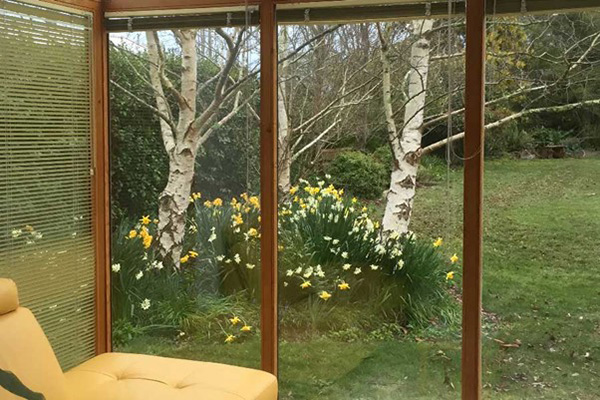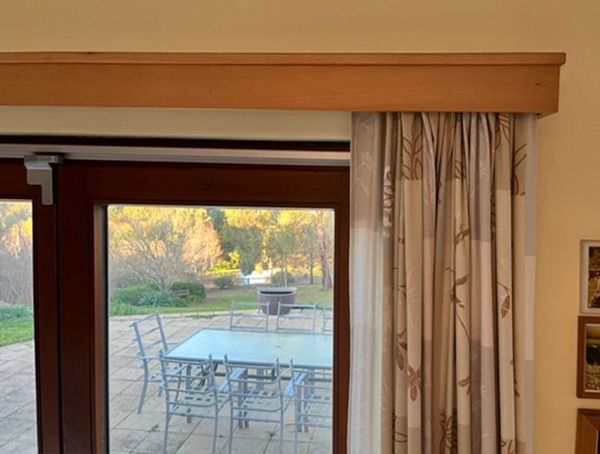Tilt and turn windows open two ways: inside at the top like a hopper window or inside to the side like a casement window. Because of these opening options, it is important to choose window furnishings to suit and which do not affect the opening and closing of the windows.
Mounting outside recess
Curtains and blinds are suitable window dressings and can be mounted inside or outside the recess. An outside recess mount is when the curtains or blinds are mounted on the face of the wall just above the window opening. It’s important that there is enough space for the window to tilt inwards at the top and the curtains are also not in the way of opening the windows fully as casement to the inside.
Curtains are a good choice, providing styling details such as pleats, and are best mounted outside the window recess. Roller blinds and roman blinds can be installed outside the recess as well but care needs to be taken that they are installed high enough for them to clear the window reveal when pulled up so the window can be opened fully.
Mounting on window frame
Blinds can also be mounted directly onto the window frame, and there are options available that are fitted directly into the beading of the window frame. Some of the latter can be clipped in without power tools or screws. Mini venetians are another possibility that can be installed onto the glass beads. All these blind options are integrated and move with the window or door.

Two-way opening blinds
Honeycomb or pleated blinds can be operated by a chain mechanism. Traditionally blinds open from the top down but there are now options available that can be opened from the bottom up. Some even let you open them from the top and bottom at the same time, only leaving the middle of your window covered, depending on your preference and privacy requirements. With such blinds it is easy to open your windows in either the tilt or casement position without obstruction as these are mounted on the window frame or in the glass recess.
Pelmets
To increase energy efficiency by preventing heating loss or gain, pelmets are sometimes used. This is a really good option for low-performing windows. Technologically advanced tilt & turn windows combined with double or triple glazing do not require pelmets as window furnishings themselves are mostly only required for privacy or decoration.

External shading
To achieve the highest energy efficiency, it is also important in which direction windows face: Windows to the north let in sunlight in winter to warm the house and with correct eaves the sun cannot enter the building in summer when it is high in the sky. East, and especially west windows, should be kept to a minimum. If this is not possible, external shading should be used. This can be through deciduous trees or external blinds. Motorised external venetians may be a good option as these can be tilted to still let in light while stopping the sun from entering the house.
Ready to talk windows? Contact us.
Note: Please be aware that Paarhammer manufactures custom-made windows and doors, and does not sell blinds or curtains.

